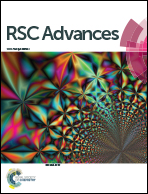Carbon quantum dots as a macromolecular crowder†
Abstract
Fluorescent carbon quantum dots (CQD) induce macromolecular crowding making them suitable for probing the structure, function and dynamics of both hydrophilic and hydrophobic peptides/proteins under near in-cell conditions.


 Please wait while we load your content...
Please wait while we load your content...